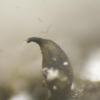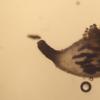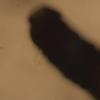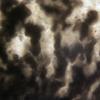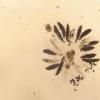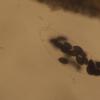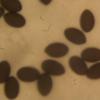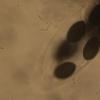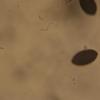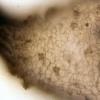
09-12-2025 12:06
 Andgelo Mombert
Andgelo Mombert
Bonjour,Je recherche l'article concernant Hypobryo

07-12-2025 16:07
Arnold BüschlenHallo, ich habe in einer Moos-Aufsammlung (epiphy

08-12-2025 21:04
Mark Stevens"Hello everyone,I'm relatively new to microscopy (

08-12-2025 18:59
 Lothar Krieglsteiner
Lothar Krieglsteiner
.. found by a seminar-participant, I do not know t

08-12-2025 17:37
 Lothar Krieglsteiner
Lothar Krieglsteiner
20.6.25, on branch of Abies infected and thickened

16-03-2014 22:00
Hello,I found this species a few months ago but ha

08-12-2025 13:39
Thomas Læssøehttps://svampe.databasen.org/observations/10572899
Schizothecium alloeochaeta?
Joop van der Lee,
26-01-2022 08:56

Found on donkey dung.
Normally these animals cannot be found in the wild in Holland but in this case they were protecting sheep against wolve attacks.
Perithecia: 580x362 um; neck cylindrical 182x102 um covered with black papillae; body covered with small agglutinated hairs.
Asci: 32-spored with a spore bearing part of 153-215x4r1-47 um and a long stalk
Sp;ores: ellipsoide; 19.6-21.4x11.6-12.6 um; pedicel 4.8x1.5 um; upper cauda 2.6x10.5 um; lower cauda not observed.
Joop
Björn Sothmann,
26-01-2022 09:21

Re : Schizothecium alloeochaeta?
Hi Joop,
why not simply Schizothecium dakotense? All the features that you describe seem to fit rather well for this species. According to Doveri 2004, S. alloeochaeta is only known from the type, has slightly smaller spores and should be covered in hyphoid hair.
Björn
Michel Delpont,
26-01-2022 09:54

Re : Schizothecium alloeochaeta?
Absolutely; that's pretty much what I answered yesterday to Joop!
Michel.
Joop van der Lee,
26-01-2022 10:36

Re : Schizothecium alloeochaeta?
Hello Björn and Michel,
Thanks for your response, I do agree that measurements of perithecia, asci and spores do fit the description but I do have some problems with the long neck.
In Doveri 2004 the photo of the perithecium (photo 20) for S. dakotense does not show a long neck because that one is still immature.
In Bell and Mahony 1995 the drawing of P. dakotensis does not show a long neck either.
The only documentation that show a longer neck is Mirza & Cain 1969 for P. dakotensis
I replaced photo-5 with a new one providing improved presentation for the base of the neck.
A few minutes ago I zoomed in on photo-1 & photo-2 and it revealed that the top of the neck was covered with spores as is seen many times with Schizothecium species.
I measured the neck by means of the narrow ostiole channel which is 148x88 um, so that solves my problem with the neck.
Joop
Thanks for your response, I do agree that measurements of perithecia, asci and spores do fit the description but I do have some problems with the long neck.
In Doveri 2004 the photo of the perithecium (photo 20) for S. dakotense does not show a long neck because that one is still immature.
In Bell and Mahony 1995 the drawing of P. dakotensis does not show a long neck either.
The only documentation that show a longer neck is Mirza & Cain 1969 for P. dakotensis
I replaced photo-5 with a new one providing improved presentation for the base of the neck.
A few minutes ago I zoomed in on photo-1 & photo-2 and it revealed that the top of the neck was covered with spores as is seen many times with Schizothecium species.
I measured the neck by means of the narrow ostiole channel which is 148x88 um, so that solves my problem with the neck.
Joop

